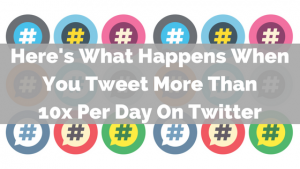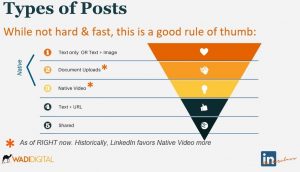There are plenty of digital marketing myths these days and they’re holding back businesses in nearly every industry. Many of those myths are old ‘best practices’ that just haven’t been tested or challenged. So every week, we’ll look at some of the most common myths and analyze them to see if they still hold up to today’s fast-paced online world.
One of the most common myths that has plagued digital marketers for years is taking a ‘bad’ email unsubscribe rate as a sign of failure. The reality is that unsubscribers are doing the work for you and cleaning your list of people that have lost interest. Which is key to building a powerful email list.
The Blessings of Email Unsubscribers
Email unsubscribe requests feel like a blow to the stomach, but remember it’s not always a bad thing. In fact, there are a few blessings of unsubscribers from your email list:
They Could be Pointing to a Bigger Issue
A steady spike in your email unsubscribe rate could very well be a sign that something in your email program needs to be adjusted.
Has the type of content in your emails changed drastically? Are you delivering on the promise you made when they signed up for your emails?

20% of people that unsubscribe from emails are doing it because the content isn’t relevant to them.
If your unsubscribe rate continues to grow, try testing new content or look at data to segment your audience in new ways.
They Can Guide Your Future Marketing Decisions
As marketers, we know that data is the strongest way to back up any belief or suspicion. A high spike in unsubscribes from your emails should hint to what your audience doesn’t want from your brand or could signal a change in your overall audience.
Insights and strategies developed with your unsubscriber metric in mind, will not only help with your email marketing strategies but your marketing plan as a whole.
They’re Saving You Money Overtime
Why should you spend money on someone who doesn’t want your emails? Most email software providers have plans with thresholds on the number of subscribers in your email list or limits on sending emails.
Use the money saved to put towards channels that will fill your email list with the engaged subscribers you want.
So What’s a ‘Good’ Unsubscribe Rate?
Just like many other marketing metrics, what is considered ‘good’ or ‘bad’ varies based on industry, size, and email list quality. According to MailChimp’s recent Email Marketing Benchmarks report, most industries are averaging between .2-.3% unsubscribe rate.
Regardless of size or industry, if your email unsubscribe rate is greater than .5% you may need to monitor your spam complaint rate. These two tend to be positively correlated, so if one metric increases, the other usually follows.
Make the Most of Your Email Unsubscribers
Don’t be fooled by the myth that unsubscribes from your email list are completely awful. In reality, you should make the most out of the unsubscribers with a quick exit survey to gain insight to why they’re opting out.

The short survey unsubscribers receive from Fashionista when they decide to opt out of emails.
As the above 1-question exit survey from Fashionista shows that asking people why they’re unsubscribing can be quick and painless. Usually, this is where brands and businesses will get the most honest feedback, so don’t miss out on feedback you could be getting from unsubscribers.
Keep the ‘Right’ People From Unsubscribing
An option to change the frequency of emails or choose select topics to receive could catch any would-be unsubscribers who still have interest in you and your products. Letting them tell you what they want and how they get it, on their terms, is an effective way to keep your subscribers.

Bottom line is we would like as few email unsubscribes as possible, especially from the ‘right’ people. If you keep in mind these strategies for your email marketing lists and sales funnels then unsubscribes from your email lists will no longer make you feel defeated.
The ‘good’ unsubscribers no longer have a negative impact on your click, open, and conversion rates and you’re left with a strong email list of potential customers. The reality of the myth that “unsubscribes are signs of failure,” is just that, a myth.
Digital & Social Articles on Business 2 Community(87)
Report Post








